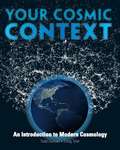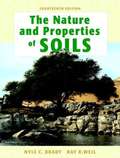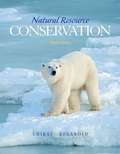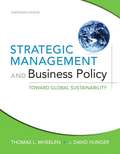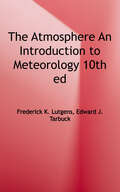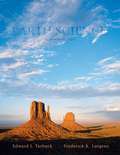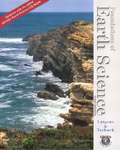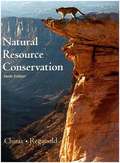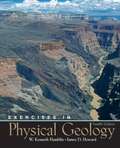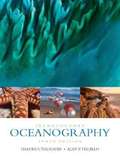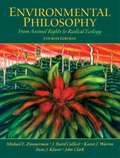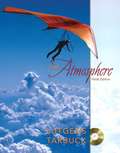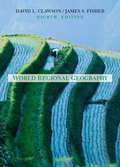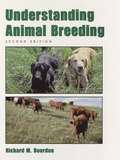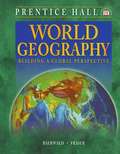- Table View
- List View
Your Cosmic Context: An Introduction to Modern Cosmology
by Todd Duncan Craig TylerYour Cosmic Context provides a framework for exploring the nature and history of our universe. Equally well suited for independent reading and study or for a one-term general education course in cosmology, this book is a guide to the key insights of scientific cosmology, including the big bang theory and exotic entities like dark matter and dark energy. It also explains how we discovered the surprising things we now know about the distant reaches of space and time, and thereby serves as one of the best available illustrations of the scientific method in action.
The Nature and Properties of Soils
by Nyle C. Brady Ray R. WeilThe Nature and Property of Soils is an engaging book for readers. It has an ecological approach that explains the fundamentals of soil science effectively. Chapter topics include Soil Erosion and Its Control, Soil Acidity, Soils and Chemical Pollution, and Organisms and the Ecology of the Soil. For individuals interested in soil and the environment.
Natural Resource Conservation: Management For A Sustainable Future
by Daniel Chiras John ReganoldThis comprehensive book describes the ecological principles, policies, and practices required to create a sustainable future. It emphasizes practical, cost-effective, sustainable solutions to these problems that make sense from social, economic, and environmental perspectives. A focus on sustainable development puts readers in touch with one of the most significant shifts in thinking and action in the environmental and resource management arenas. A variety of lasting solutions are provided that make sense from social, economic, and environmental viewpoints.
Strategic Management And Business Policy: Toward Global Sustainability, 13th Edition
by Thomas L. Wheelen J. David HungerThis text equips readers with the strategic concepts they will need to know as we face issues such as climate change, global warming and energy availability. This thirteenth edition provides an array of timely, well-researched, and class-tested cases--nineteen of which are new or revised.
The Atmosphere: An Introduction to Meteorology
by Frederick K. Lutgens Edward J. TarbuckUsing everyday, easy-to-grasp examples to reinforce basic concepts, this highly regarded handbook remains the standard introduction to meteorology and the atmosphere – components, problems, and applications. Includes the most up-to-date coverage of topics such as: ozone depletion; the ultraviolet index; temperature; dew point temperature and orographic effects; wildfires and weather; thunderstorms and lightning; the record-breaking Florida hurricane season; effects of air pollution, and more. Incorporates top-quality visuals, including new satellite images and illustrations by the award-winning Dennis Tasa, to demonstrate the highly visual nature of meteorology. Uses a largely non-technical writing style to help readers grasp important concepts. For those interested in learning more about meteorology.
The Cooling
by Lowell PonteAre we entering a new ice age? Many scientists think so. Many others say that the climate is becoming unstable, and that this instability is a critical threat to world food production. Earth's climate has been cooling rapidly for the past three decades, and this has already caused drought and famine in major areas of the world. In the time it takes you to read this book, at least a thousand people will have starved to death because of the impact climatic instability already has had on food production. And The Cooling has barely begun. Few questions are as urgent today as those concerning climate change and what may be done about it. Dr. Cesare Emiliani, a "paleoclimatologist" at the University of Miami, says: "Is Earth's climate changing? Should governments try to modify climate? In dealing with these controversial issues, Lowell Ponte has written a remarkably thorough, far-ranging, balanced, and scientifically accurate book-the best popular book I have read on both these questions. I recommend THE COOLING to anyone who likes to think, and who cares about the planet we share."
An Event-Based Science Module: Earthquake!
by Russell G. WrightEarthquake! is an earth-science unit that follows the Event-Based Science (EBS) Instructional Model and is built around simulations of real-life events and experiences that affected people's lives and environments dramatically.
Prentice Hall Earth Science (11th edition)
by Edward J. Tarbuck Frederick K. Lutgens Dennis TasaThe latest edition of a broad and nonquantitative survey at the introductory level of topics in geology, oceanography, meteorology, and astronomy.
Foundations of Earth Science (3rd edition)
by Frederick K. Lutgens Edward J. TarbuckThis book offers a user-friendly overview of the physical environment. It retains the hallmarks expected from author's reader-friendly writing style, carefully crafted art program, and coverage of the most recent current events. It discusses key topics such as Earth materials, earth's external and internal processes, Earth's history, the global ocean, and the atmosphere.
Natural Resource Conservation: Management For A Sustainable Future
by Daniel D. Chiras John P. ReganoldThis comprehensive text provides the ecological principles, policies, and practices to manage a sustainable future. It emphasizes practical, cost-effective, sustainable solutions to these problems that make sense from social, economic, and environmental perspectives.
Exercises in Physical Geology (12th Edition)
by W. Kenneth Hamblin James D. HowardThis lab manual represents by far the best collection of photos of rocks and minerals-and one of the best compilations of exercises-available. With exercises using maps, aerial photos, satellite imagery, and other materials, this classic manual encompasses all the major geologic processes as well as the identification of rocks and minerals. The book is very useful for lab courses in Physical Geology.
Introductory Oceanography
by Harold V. Thurman Alan P. TrujilloThis book is intended to help students in their quest to find out more about oceans. Because of its comprehensive scope and excellent resource materials, it can also serve as an excellent reference work for those involved in oceanography.
World Geography: Building a Global Perspective
by Thomas J. Baerwald Celeste FraserNIMAC-sourced textbook
Prentice Hall Earth Science: Physical Setting/Earth Science (New York)
by Edward J Tarbuck Frederick K. LutgensEarth Science New York High School Textbook
Prentice Hall Earth Science
by Edward J. Tarbuck Frederick K. Lutgens Dennis TasaNIMAC-sourced textbook
Environmental Philosophy: From Animal Rights to Radical Ecology
by Michael E. Zimmerman J. Baird Callicott John Clark Irene J. Klaver Karen J. WarrenEdited by leading experts in contemporary environmental philosophy, this anthology features the best available selections that cover the full range of positions within this rapidly developing field. Divided into four sections that delve into the vast issues of contemporary Eco-philosophy, the Fourth Edition now includes a section on Continental Environmental Philosophy that explores current topics such as the social construction of nature, and eco-phenomenology. Each section is introduced and edited by a leading philosopher in the field. For professionals with a career within the environmental field including law, politics, conservation, geography, and biology.
The Atmosphere: An Introduction to Meteorology (9th edition)
by Frederick K. Lutgens Edward J. TarbuckA standard textbook presenting a current and comprehensive survey of meteorology for undergraduates.
World Regional Geography: A Development Approach (8th edition)
by David L. Clawson Merrill L. JohnsonThis book is organized around the central theme of human development. Each author employs the human development theme to create a substantive volume on world regional geography that presents a vital, issues-oriented overview of the topic.
Understanding Animal Breeding (Second Edition)
by Richard M. BourdonAn experienced animal breeder, Rick Bourdon designed this book to be a modern, technologically up-to-date approach to animal breeding. Understanding Animal Breeding addresses the abstract concepts of animal breeding, presenting the necessary mathematics, but previous experience in genetics and statistics is not assumed. Well organized and readable, the book stresses application, then explains theory for an overall understanding of the material. Coverage explores the latest material on interactions and breeding objectives; performance testing; probabilities and inheritance; the Hardy-Weinberg equilibrium with multiple alleles; realized response to selection; breeding for uniformity; and biotechnology. For practicing animal breeders as well as those interested in breeding and agriculture.
Wildlife Ecology And Management
by Eric G. Bolen William Laughlin RobinsonThis exceptionally comprehensive, single-source introduction to the art, science, theories, practices, and issues of wildlife management is ideal for the novice in the subject. Features full-chapters on predators, urban wildlife, policy, water, soil, diseases, conservation biology. New, up-to-date issues covered include the removal of dams, global warming, emerging diseases among elk and deer, adaptive harvest management, animal rights groups, women hunters, population data, migratory animals and more. For anyone interested in an exceptionally comprehensive introduction to wildlife management and conservation.
Prentice Hall World Explorer: People, Places, And Cultures (Texas edition)
by James B. KrachtOrganize information in a way that helps you see meaningful connections or relationships. Taking notes as you read will improve your understanding.
Prentice Hall World Geography: Building a Global Perspective
by Thomas J. Beawald Celeste FraserWhat does it mean to learn world geography? It means more than gathering the facts, names, and data about the nations and lands of the earth. It means gaining a feel for, or an appreciation of, the richness and variety of the face of our planet.
Physical Science: Concepts in Action, With Earth and Space Science
by Michael Wysession David V. Frank Sophia YancopoulosPhysical Science is the study of non-living systems, as opposed to a study of biological sciences or living systems. It consists of physics, chemistry, astronomy and earth science. It also includes scientific method and experimentation and this is what this textbook is all about.
